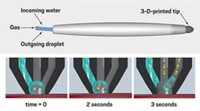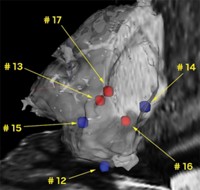Advertisement
Grab your lab coat. Let's get started
Welcome!
Welcome!
Create an account below to get 6 C&EN articles per month, receive newsletters and more - all free.
It seems this is your first time logging in online. Please enter the following information to continue.
As an ACS member you automatically get access to this site. All we need is few more details to create your reading experience.
Not you? Sign in with a different account.
Not you? Sign in with a different account.
ERROR 1
ERROR 1
ERROR 2
ERROR 2
ERROR 2
ERROR 2
ERROR 2
Password and Confirm password must match.
If you have an ACS member number, please enter it here so we can link this account to your membership. (optional)
ERROR 2
ACS values your privacy. By submitting your information, you are gaining access to C&EN and subscribing to our weekly newsletter. We use the information you provide to make your reading experience better, and we will never sell your data to third party members.
Analytical Chemistry
Real-Time Mass Spec Aids Cancer Surgery
Chemists combine mass spectrometry with laser surgery to quickly identify tumor tissue boundaries
by Laura Cassiday
February 21, 2011
| A version of this story appeared in
Volume 89, Issue 8
Chemists have combined mass spectrometry with laser surgery to quickly identify tumor tissue, a technology development that could speed up and improve cancer treatment (Anal. Chem., DOI: 10.1021/ac102613m). When surgeons remove tumors from patients, they must excise some healthy tissue surrounding the tumor to ensure that no cancer is left behind. But because cancer cells aren’t easy to spot with the naked eye, surgeons—and their anesthetized patients—must wait 30 to 40 minutes for a pathologist to check tissue samples before finishing an operation. Zoltán Takáts of Justus Liebig University, in Giessen, Germany, and colleagues have developed a faster technique based on laser desorption ionization mass spectrometry. In their method, they fire an infrared laser at tiny spots of tissue to generate an aerosol of ionized phospholipids that are analyzed by mass spectrometry. The scientists feed the mass spec data into a statistics computer program that distinguishes between healthy and cancerous tissues according to the types and amounts of phospholipids present. The team has integrated this technique with existing laser surgery instruments to analyze the aerosols produced as the laser excises tissue. In 2009, Takáts and coworkers reported an early version of the technique that used electrodes to ionize tissue molecules.





Join the conversation
Contact the reporter
Submit a Letter to the Editor for publication
Engage with us on Twitter